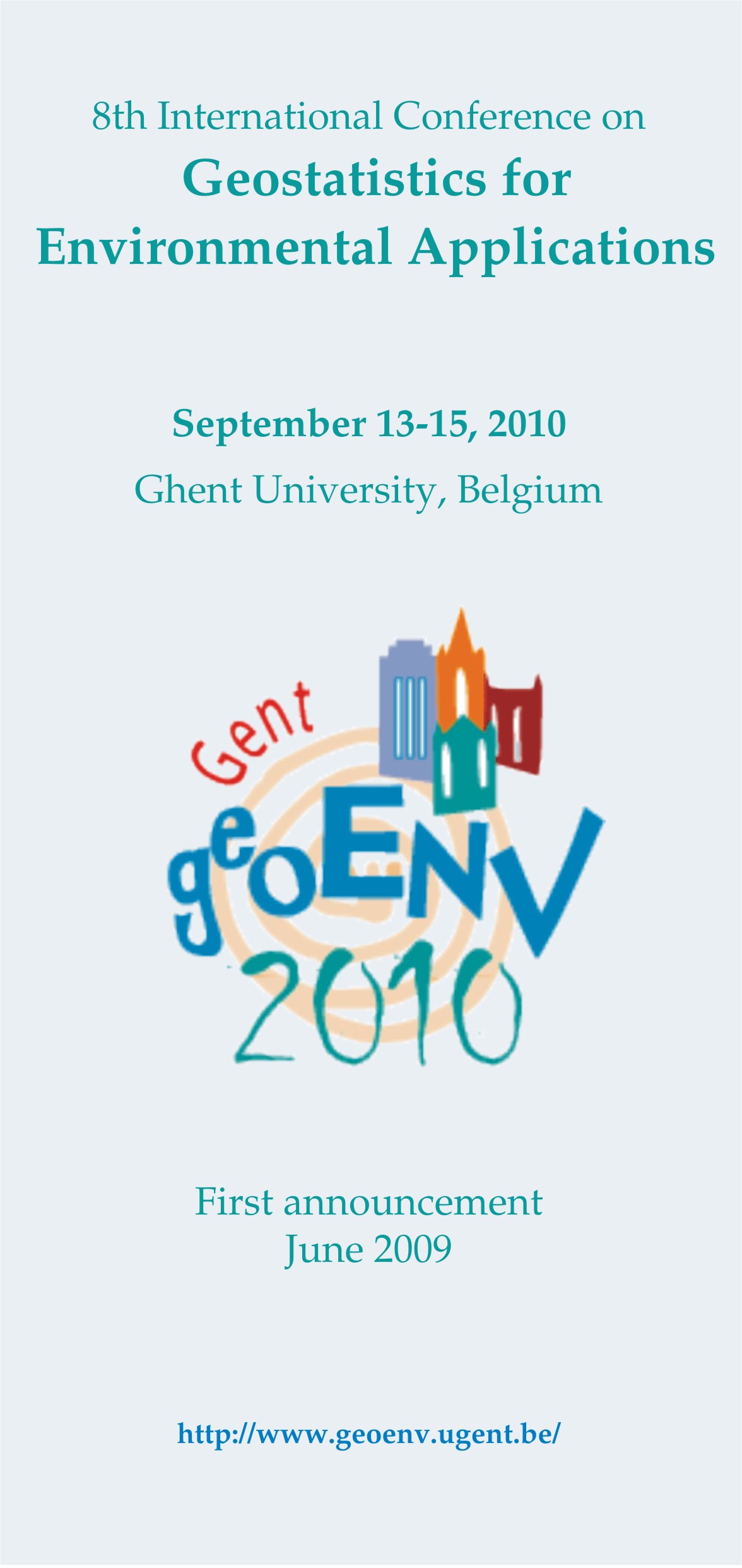Keynote: Geostatistical Interpolation and Simulation using Copulas
András Bárdossy
In geostatistical applications the spatial dependence structure is traditionally described with the help of variograms or covariance functions. These however are strongly influenced by the distribution of the related variables under investigation. Variograms calculated from highly skewed data are often dominated by a few outlying observations. Indicator geostatistics are often used to overcome this problem. The transformation of the observed values to a uniform distribution using their marginal distribution function offers another possibility. Multivariate distributions with uniform marginals are called copulas. Copulas are frequently used to describe multivariate dependence in problems encountered in finance and the economy. In geostatistics the use of the copulas offers a distribution-free description of spatial dependence. In place of variograms and covariance functions, bivariate empirical copulas, corresponding to separation distances and directions are calculated and used to gain insight into the dependence structure. To gain more insight into the underlying structure empirical rank correlation functions, and measures of assymmetrical dependence can be calculated from these empirical copulas to quantify the strength and the form of spatial dependence. Examples from groundwater quality parameters and rainfall data show how the real inter-dependence can be understood using copula-based measures in contrast to how is distorted through skewed marginals when using variograms and covariance functions. Easy to visualise bivariate copulas often show unusual dependence of the variables for different ranges of the investigated values. The dependence is often assymetrical; for example high values might be strongly related, while low values are only weakly linked. These differences can be expressed through the assymetry function which is a third moment expression of spatial dependence. The assymetry corresponding to a Gaussian spatial process is zero, thus the assymmetry function indicates the departure from Gaussian dependence. Many natural variables, such as topographical surfaces, rainfall, groundwater quality parameters and soil hydraulic conductivity, show assymetrical spatial dependence. If an assymetrical dependence is observed, a normal score transformation of the variable is not appropriate, so that other multivariate assumptions have to be applied. In order to determine appropriate multivariate copulas to describe the observed spatial dependence, a few assumptions should be made. These include spatial stationarity of the dependence structure and invariance of the multivariate distributions with respect to their multivariate marginals. Furthermore the multivariate copula should allow the spectrum from full dependence through to independence of the corresponding variables. Non-Gaussian copula models which fulfill the above conditions can be obtained through selected transformations. The copula parameters can be estimated using a partition of the observations into multipoint subsets followed by an appropriate maximization of the corresponding likelihood function. Interpolation of quantiles can be perfomed using copulas, where the expected and median values are calculated from the copulas conditioned on the nearby observations. The fully conditional copulas provide the distributions for estimation at the unobserved locations and can be used to define confidence intervals which depend on both the observed data values and geometry. The quality of the estimators and the conditional distributions may be verified using cross validation or split sampling approach. Using the full estimated conditional distributions a sequential conditional simulation can be set up.
Examples, ranging from small scale soil samples through regional aquifers, large scale weather fields and landscapes from Mars are used to demonstrate the methodology.










